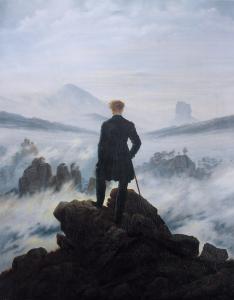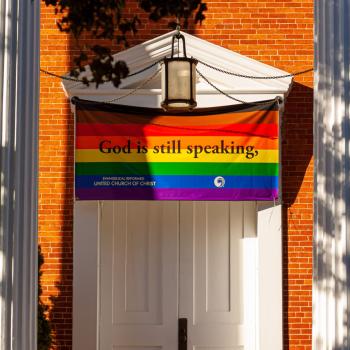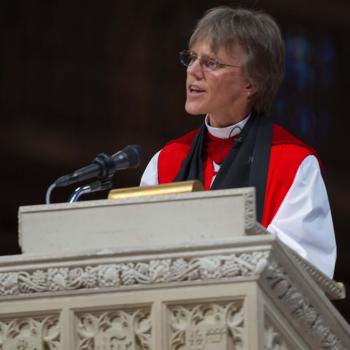“The law of your mouth is better to me than thousands of gold and silver pieces!”
Psalm 119
“The ordinances of the Lord are true and righteous altogether. More to be desired are they than gold, even much fine gold, sweeter also than honey, and drippings of the honeycomb.
Psalm 19
Imagine walking down the street somewhere in America today and hearing the following, “wow, what a beautiful ordinance New York just passed!” Or perhaps, “man, California really has the loveliest laws in the nation.” Or maybe even, “boy, these new state guidelines are so desirable, I just can’t stop thinking about them!”
Statements like these would sound quite bizarre to modern ears. Laws for modern man are not usually thought of in aesthetic or sensual terms like those found in the Psalms. For the ancient Israelite, however, the law of God was more than just a series of practical guidelines or apodictic commands. Rather, “Torah” was something to behold, to gaze at and to ponder.
The Psalmist speaks of God’s law and His statutes as possessing a quality which demanded the song writer speak of them in aesthetic categories. Poetic metaphor was one way to talk of the Law. The Law was not just good, it was beautiful: beautiful like a melody. The Law was not just obligatory, it was attractive: tantalizing like honey and precious like the rarest metals. Today, however, while laws may be just or unjust, repressive or liberating, impractical or practical; rarely are they likened as gold and silver to our eyes, as honey to our lips or music to our ears.
Why is this? What, if anything, has been lost to us in how we view Law today compared with how the ancient Israelite viewed their “Torah?”
Modern Man & The Loss of Aesthetic Ontology
In his magisterial work, A Secular Age, Charles Taylor explains the loss of the “ontic” in Western art, describing how in the modern era a universally accepted ontology, i.e., a shared metaphysical understanding of the cosmos, was no longer available to the contemporary artist. Unable to appeal to common signs and shared imagery that pointed to deeper realities of the created order and the “higher times” (54-59) of a divinely superintended history, meaning no longer inhered in the metaphysical reference points aesthetic symbols represented. Meaning was instead relegated to the sensibilities of the artist himself:
We could describe the change in this way: where formerly poetic language could rely on certain publicly available orders of meaning, it now has to consist in a language of articulated sensibility….[Alexander] Pope, for instance, in his Windsor Forest, could draw on age-old views of the order of nature as a commonly available source of poetic images. For Shelly [1792-1822] this resource is no longer available; the poet must articulate his own world of references, and make them believable.
Taylor, A Secular Age, 353.
What changed between Pope’s early 18th century world and Shelly’s early 19th century one to make it so that the artist himself had to not just render the publicly accessible signs, but also provide his own meaning for the signs rendered, is simple to articulate but daunting to grasp as a historical fact.
The metaphysical view of the cosmos that had been taken for granted for millennia, an understanding of reality grounded in the Judeo-Christian tradition, classical Greek philosophy and the biblical narrative, had gradually eroded. The given assumptions that the objects of artistic representation were real was no longer accepted. Whether those representations were scenes of biblical or classical history, e.g. stories of great heroes or saints, or of more abstract realities, e.g., the order and structure of the angelic realm, the artistic signs were no longer thought to point to actual ontological substances, transcendent realms or even historical persons and events.
From the time of the early Enlightenment, therefore, the artist would no longer be able to specialize only in the technique of his artistic medium, the goal being to represent both immanent and transcendent features of cosmic reality. Instead he had to create his own cosmic “reality” to represent. This marks a fundamental intellectual shift from objective mimesis to subjective articulation, or poiesis—from artistic imitation to artistic generation.
This loss of the ontological referent in artistic representation entailed the conceptual shift from understanding the work of art, e.g., the painting or concerto, as the subject’s expression about an object of affection (or contemplation), to seeing the work of art itself as the thing worthy of affection or contemplation. This process began first with the artist and then migrated into the art community, becoming a new “given” for how the culture understands the art it views.
Once this philosophical transition had occurred in the mind of the common man, it was no longer to the deeper mystery of Christ’s atonement that say the Isenheim Altarpiece pointed its viewer, rather it is the Altarpiece itself that became the terminus ad quem. It, the work of art, points to nothing other than what it is. The piece of art is no longer an instrumental good aimed at some final cause, it itself is now seen as its own end. The later impressionist phrase that captured this new philosophy of aesthetics was “l’art pour l’art” or art for art’s sake.

The Persistent Mystery of Transcendence
Nevertheless, this does not mean we still do not feel or sense something transcendent when we stand before Grünewald’s masterpiece, or when we hear a powerful rendition of Bach’s Cello Suite #1 in G Major. But, it does mean that we are left grasping for that which would explain why we feel transcended. As Taylor says about this “absolute” art, “it trades on resonances of the cosmic in us” while at the same time “the ontic commitments are very unclear” (356). In other words, we feel something metaphysically real, but we wonder if that reality is external to us, or whether is it in the power of the artist himself to create such “realities?” Is the artist discerning some greater mystery, or is he just being mysterious? Taylor goes on:
The idea is: the mystery, the depth, the profoundly moving, can be, for all we know, entirely anthropological. Atheists, humanists cling on to this, as they go to concerts, operas, read great literature. So one can complement an ethic and a scientific anthropology which remain very reductive and flat.
Taylor, A Secular Age, 356.
If it is the case that man is just being mysterious, i.e., acting mysteriously through his art, then a kind of poetic atheism is possible. This too would be an amazing phenomenon should man turn out to be nothing more than the sum of his molecules—raw matter all the way down. However, the loss of a metaphysical component or ontological referent to the artistic expressions of modern man goes beyond just leaving us with a sense of confusion as to the source of our wonderment. It touches upon the nature of morality as well.
The Beautiful and The Good
The relation of the aesthetic to the moral has been recognized since ancient times. In On Beauty and Being Just, Elaine Scarry highlights how recognizing that which is beautiful acts as the catalyst for generating that which is good or lawful,
The generation is unceasing. Beauty, as both Plato’s Symposium and everyday life confirm, prompts the begetting of children: when the eye sees someone beautiful, the whole body wants to reproduce the person. But it also—as Diotima tells Socrates—prompts the begetting of poems and laws, the works of Homer, Hesiod, and Lycurgus. The poem and the law may then prompt descriptions of themselves—literary and legal commentaries—that seek to make the beauty of the prior thing more evident, to make, in other words, the poem’s or law’s “clear discernibility” even more “clearly discernible.
Excerpt From: Elaine Scarry. “On Beauty and Being Just.” Apple Books. https://books.apple.com/us/book/on-beauty-and-being-just/id719594134
Moral goodness, in many ways, is an expression of an aesthetic quality. The beholder of beauty longs to see it regenerated and further propagated in diverse forms. Most biologically and concretely, in the reproduction of children. More abstractly and conceptually in the creation of just laws. The former mirrors the divine act of creation itself, while the latter makes clear or discernible to the rational mind the harmony embedded in creation.
It is necessary at this point to note an important distinction between articulations (e.g. laws or statutes) of the Good and aesthetic experiences of the Beautiful. This distinction lies in their varying modes of existence. Laws and statutes are propositional and must be formed and understood rationally through properly crafted linguistic structures. Aesthetic expressions are primarily non-propositional and usually engage the emotions. Poets try to split the difference between these two modes, using metaphorical and figurative language and concise verbal constructions to evoke emotions through word pictures. Music and painting do the same but through non-verbal means. Nevertheless, it has been shown that knowledge can be acquired both through the propositional and indirect as well as through the non-propositional and direct (see James O. Young, Art and Knowledge, for an extended philosophical treatise on how art conveys knowledge). Art conveys knowledge, especially moral knowledge.
Further, beyond the aforementioned desire to propagate that which is beautiful through various means, some more concrete, others more abstract, Scarry goes on to say that there is also a posture of reverence one takes when in the presence of beauty,
The moment of coming upon something or someone beautiful might sound…like this: ‘You are about to be in the presence of something life-giving, lifesaving, something that deserves from you a posture of reverence or petition. It is not clear whether you should throw yourself on your knees before it or keep your distance from it, but you had better figure out the right answer because this is not an occasion for carelessness or for leaving your own postures wholly to chance.
Elaine Scarry, Part I: On Beauty and Being Just
Encounters with beauty force the subject to acknowledge something beyond themselves that requires some kind of appropriate response, some “right answer.” Real beauty imposes normativity upon us.
We now begin to see what the Psalmist was getting at when, under divine inspiration, he waxed poetically about God’s Law. In the New Testament, St. Paul commends the church at Philippi to consider that which is beautiful as a way to know what moral excellence is,
Whatever is true, whatever is honorable, whatever is just, whatever is pure, whatever is lovely, whatever is commendable—if there is any moral excellence and if there is any praise—dwell on these things.
Phil 4:8-9
However, for both the Psalmist and the Apostle Paul, unlike for the post-Enlightenment artist, that contemplation of beauty had a clear object of reference, namely the Divine Nature itself, the very Being of God.
Two Contrary Visions of Aesthetics and Morality
Schiller’s Humanism
For the post-Enlightenment Romantics the question then had to be raised: could the experience of beautiful phenomena, apart from a religiously defined ontological referent of that experience, “save us” from our existential crisis and provide a basis for our ethics? In the wake of this crisis two influential Friedrichs, Friedrich Schiller and Friedrich Nietzsche, constructed influential, yet contrary, visions of the aesthetic.
Friedrich Schiller thought that if the biblical view of God was no longer a metaphysical option for filling in the meaning of that which is beautiful, then the encounter with beauty itself must be the thing that could relieve us from our existential condition. Not only that, but it could also provide a moral foundation. For Schiller and other Romantics, morality is a kind of emanation of the beautiful, but where the beautiful is left impersonal and ambiguous. To be good is to create beautiful things or respond properly to those things that are beautiful. Taylor explains:
Schiller thus gave a wonderfully clear, convincing and influential formulation to a central idea of the Romantic period, that the answer to the felt inadequacy of moralism, the important defining goal or fulfillment which it leaves out and represses, was to be found in the aesthetic realm. This went beyond the moral, but in Schiller’s case wasn’t seen in contradicting it. Rather it complements morality in completing human fulfillment.
Taylor, A Secular Age, 358-359.
In other words, the specified moralities found in traditional religions like Judaism and Christianity, which trafficked in divine laws and moral commands handed down from a personal God, were stifling to the human subject. They were moralistic in that they warred against our more natural instincts and sensibilities. Eternal laws that were claimed to coincide with a divine will were too restrictive to the human creature, and, as such, the experience of beauty itself now became the grounds for ethical appeals.
Christian and Jewish moral codes were seen as historically contingent, or so it was argued, and there was a higher law that those religions had perverted in their strictly human attempts to articulate morality. Man had progressed and so too his moral sensibility. However, this Romantic view presented a problem, one that lingers until today. For, as pointed out above, the thing that gives meaning to any beautiful phenomena, whether a feature of nature or artifact of man, was no longer to be found in something ontologically distinct from the subject. Instead meaning was ascribed by the artist himself. By collapsing morality completely into aesthetics, Schiller could now claim that “Beauty is what will save us, complete us” (Taylor, 359).

However, by doing this, he winds up conflating morality with the meaning-making will of the artist himself. Now, it is the artist who gives definition and content to what is moral by articulating the meaning of that which is beautiful. The modern artist, unlike the Psalmist, no longer recognizes something metaphysically distinct from himself that gives its own meaning. The historical consequences of this theory of morality was the aestheticism of the 19th and early 20th centuries,. This aestheticism gave rise to an artistic culture independent of any religious system of thought, and indeed acted as a replacement for religion itself,
So created beauty, works of art, are not only important loci of that beauty which can transform us [into moral creatures] they are also essential ways of acceding to the beauty which we don’t create [i.e. Nature]. In the Romantic period, artistic creation comes to be the highest domain of human activity.
Taylor, 359, Emphasis added.
Later aesthetes like G.E. Moore would develop more philosophically rigorous systems to try and ground ethics in aesthetics. Taylor goes on to say regarding Schiller’s theory, however, that while this conflation of the aesthetic with the moral is a far cry from the ancient and medieval notions of beauty and goodness (e.g. represented most vividly in the cosmological imagery of Dante), it still leaves some room for God as the ultimate author of beauty itself.
A divine Creator of the world had not yet been entirely abandoned by the Romantics, even if particular religious dogmas about Him were. Nevertheless, having arrived at Schiller, where the distinction between nature and nature’s creator has been significantly blurred, it is not long before we come to Nietzsche, whose rejection of the Creator and the humanistic impulse will “set the aesthetic against the moral” (Taylor, 35).
For Schiller, the concept of beauty was still imbued with a residue of Christian morality and Christian virtue, in that “the Beautiful” is reflective of, or somehow still connected to, the notion of caritas, or charity. Love, light, harmony, order, and even selflessness are still the primary hallmarks of beauty. These moral and sensible notions, even if now only vaguely defined by the artist himself, were still thought of as the criteria for which something can be rightly called beautiful. Experiences of “play,” and friendship, and what might be called the fullness of life are the chief ends of man on earth (and possibly the only chief ends, should earthly existence be the only one available to us).
Nietzsche’s Anti-Humanism
For Nietzsche, however, this kind of aesthetic humanism is still far too indebted to a Christian worldview. It neglects an entire range of human sensibilities, longings, desires and dispositions that are normatively no different than charity and altruism. These are the destructive, the chaotic, and otherwise dark powers of man. Of course, for Nietzsche, these creative powers of man are not “dark,” in the sense of “wrong” or “immoral” or “deviant” from some standard that itself could be labeled “light” or “love.” Rather these “dark” powers simply are— they are as human and as life-giving as any other impulse, if not more so. However, these creative energies have, through the cultural dominance of post-Socratic Greek philosophy and Christianity, become viewed as immoral, wrong, and worthy of repression.
For Nietzsche then, a return to the pre-moral aesthetics of Homeric culture in light of the decline of Christian metaphysics is the answer to what would otherwise be a plunge into nihilism. This longing for a purely aesthetic world, one unconstrained by Christian notions of morality (or enlightenment rationalism for that matter), can be seen in one of first major work, The Birth of Tragedy as well as in one of his last books, Ecce Homo. As Robert Wicks points out, Nietzsche “expresses his hope that Dionysus, the god of life’s exuberance, would replace Jesus, the god of the heavenly otherworld, as the premier cultural standard for future millennia.”
Unlike Schiller and the earlier Romantics who left open the door to a divine referent, albeit an ambiguous one, Nietzsche slams the door shut by making the creative will of man the sole locus of “goodness.” Where Christ subjects himself to the will of the Father, and Paul calls Christians to subject their will to Christ, Dionysus subjects his will to nothing and no one. The idea of divine moral laws, let alone divine moral laws that are experienced as beautiful and to which one should subject oneself, is the sheer antithesis of the Dionysian spirit that Nietzsche proposes. Perhaps light and love find a place in the Dionysian aesthetic, but they find their place alongside, and on equal footing with chaos and war. On Nietzsche’s view it is not goodness that matters but greatness.
Conclusion: A Culture of Ambiguity in Art and Law
Fortunately, culture in the West has never embraced the fullness of Nietzsche’s vision, although some historians have claimed that Nietzsche’s view of truth and the will to power (hint: they are the same thing) intellectually funded, at least in part, the rise of National Socialism in Germany and Fascism in Italy. Also, current trends in American culture do make Nietzsche’s views seem more alive than ever, especially in the realm of art and personal self-expression. Is the creative will of man beyond criticism or reproach? Recent Super Bowl half-time shows might give us a partial answer to that question.
Still, we are not quite where Nietzsche would have taken us, at least not yet. We may no longer see the moral law of the biblical God as beautiful to our eyes and sweet to our tongue, but neither do we really feel beyond morality as Nietzsche argued, ready to indulge in every desire and self-creative longing. In fact, it is hard to even think of what kinds of laws a Dionysian culture would require, if any at all? It seems, therefore, that we still live, conceptually and existentially, somewhere between a cosmos where the moral law is beautiful because it proceeds from the nature and will of God, and Schiller’s vision of the moral law being an emanation from a beautiful but metaphysically ambiguous source.
This latter Romantic vision is still a viable option for many, if not the cultural given against which we view morality and the laws we compose to try to articulate it. A vague sense of deity, the “therapeutic, moral and deistic” god of America’s youth, seems to be about as metaphysical as our current culture can be. The art it produces is as ambiguous as its ontological commitments.
We see this cultural ambiguity on display when we watch a classical depiction of moral beauty in films like Terrence Malick’s “The Tree of Life,” followed by the glorification of man’s unconstrained creative will in Danny Boyle’s biopic “Steve Jobs.” In Boyle’s film there is no sense of Jobs being praiseworthy for any moral quality he possesses, but what is praiseworthy is his keen eye for creative design and his ability to conquer and control his domain of influence.
Between these two presentations of beauty and morality (or lack thereof) is about every Walt Disney film made since 1990, each of which tries to maintain the Schillerian middle ground. Films like “Mulan” or “The Lion King,” suggest something beautiful and mysterious about life, but in its ambiguity, leave interpretation of the experience open, allowing for the construction of one’s own personalized morality. No public ontological referent is on offer here, just vague mystery and personal decision.
In sum, law in the West seems to mirror the ambiguity of our art. Some particular laws appear quite Nietzschean in their intent and content, the recent HR5 Equality Act, others exist in a more Schillerian vein, the Dream Act, while others, albeit increasingly few, may reflect, like in a mirror darkly, our once very real belief in a transcendent God and the Christ who came to set us free from the Law.
However, like our art, the idea that the law is beautiful is an increasingly rare, if not extinct, notion. The triumph of function over form is nearly complete as the finite imagination of men runs its course. Today’s laws exist merely to help us manage our social lives, not to illuminate us to divine Wisdom from whence they flow and to which we are meant to go. And so we will not wonder when we do not hear on the streets of New York or LA or Main Street USA, “how wonderful are your laws, oh man! How delightful your mandates and rules!”

Images:
Isenheimer Altar, by Grünewald, © Jörgens.mi
“Wanderer Above The Sea of Fog” by Caspar David Friedrich, Public domain, via Wikimedia Commons
“Fountain” by Marcel Duchamp, Public domain, via Wikimedia Commons














